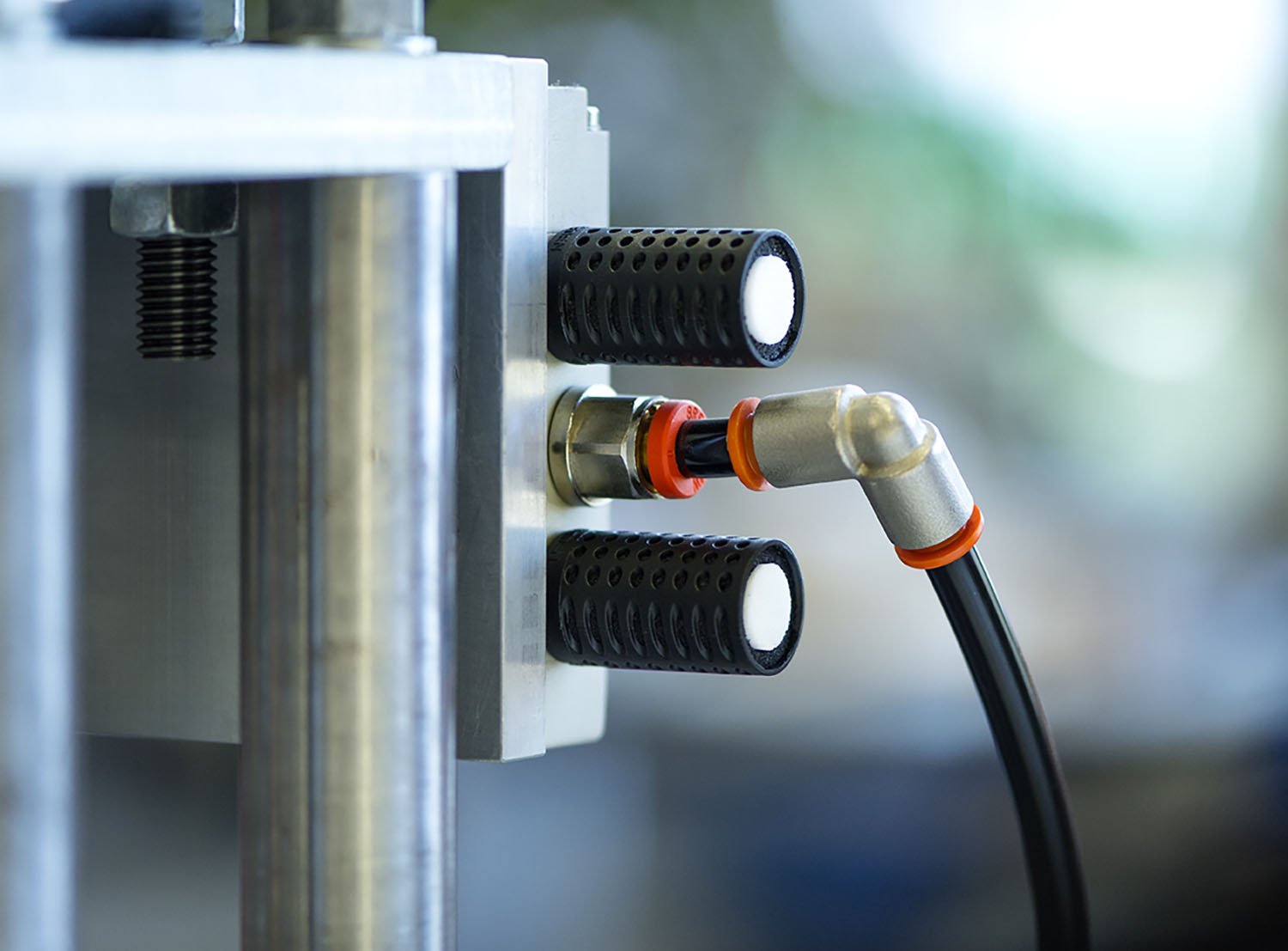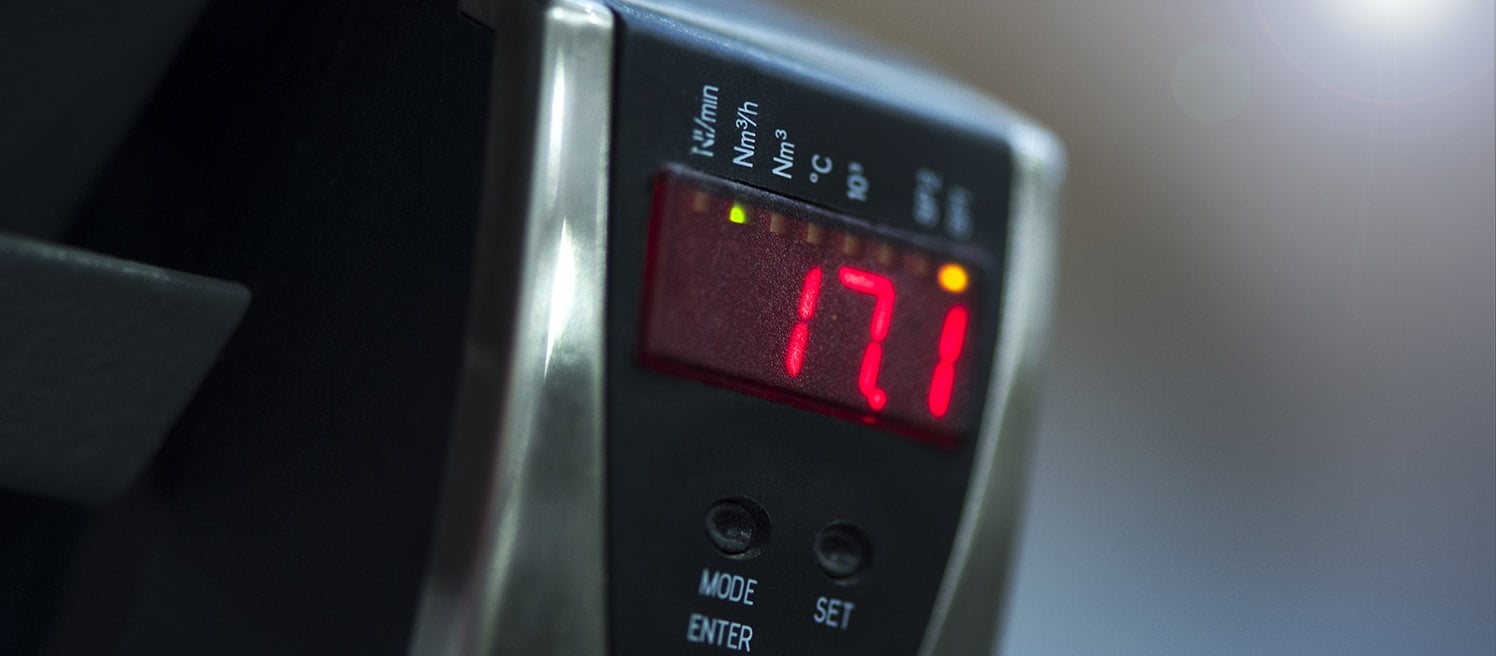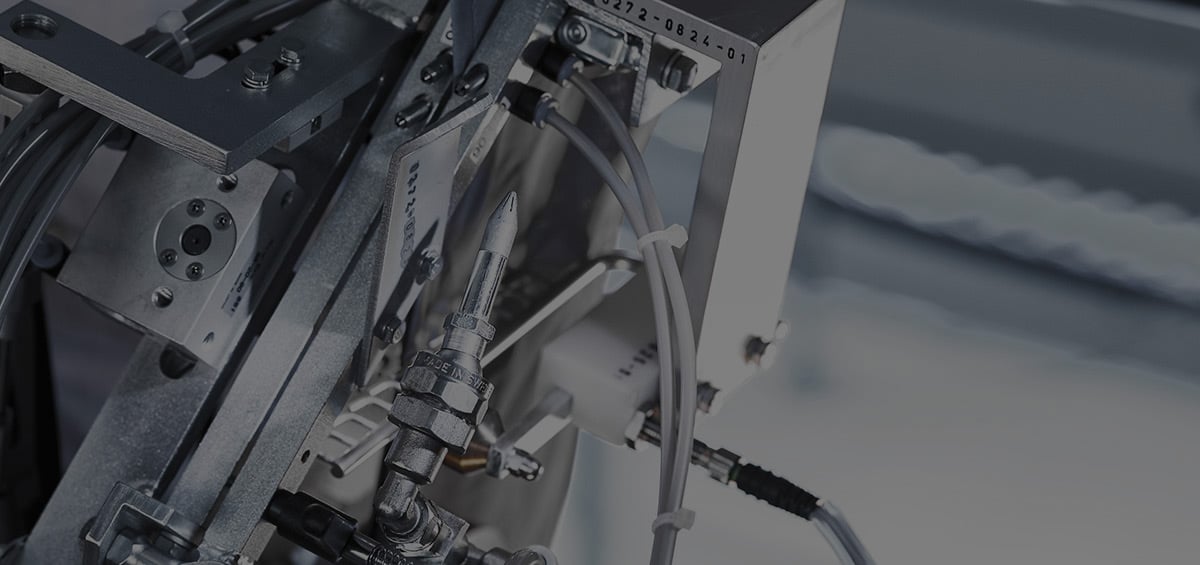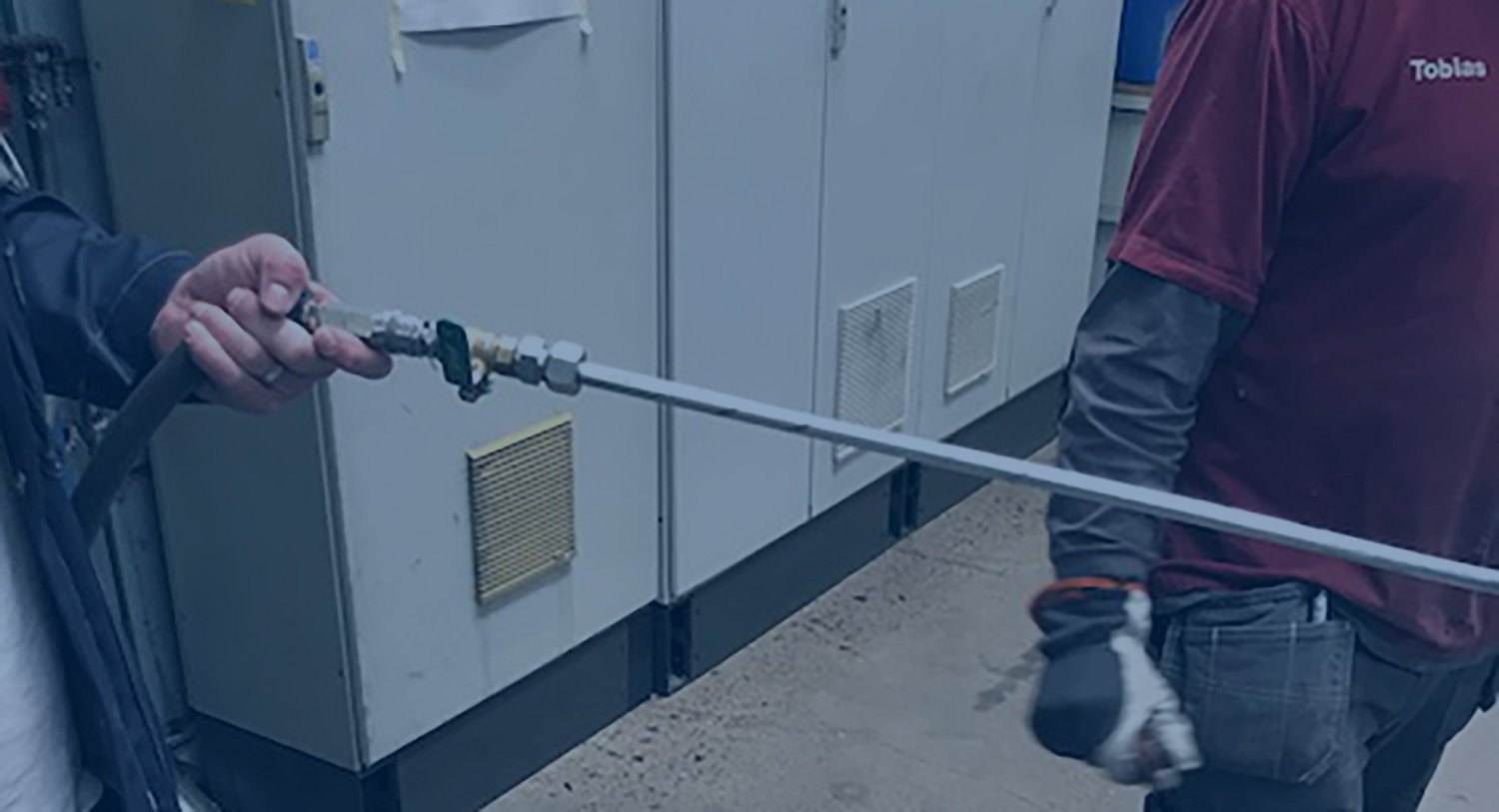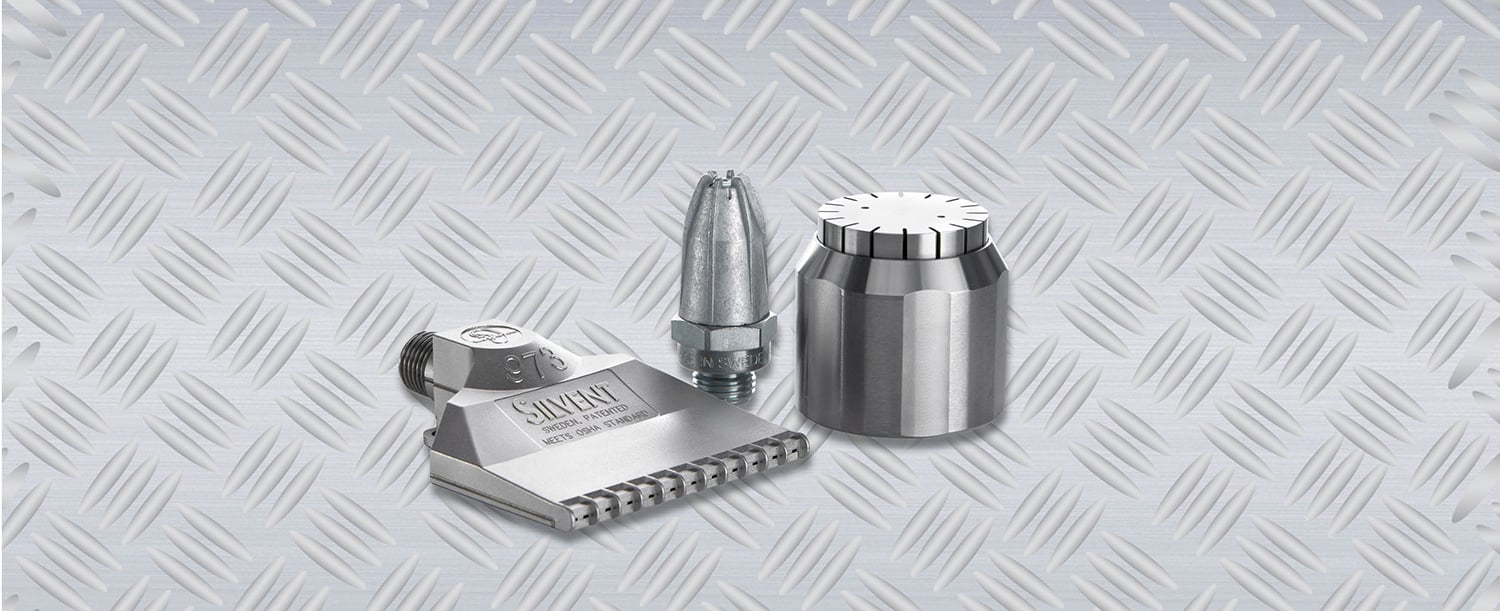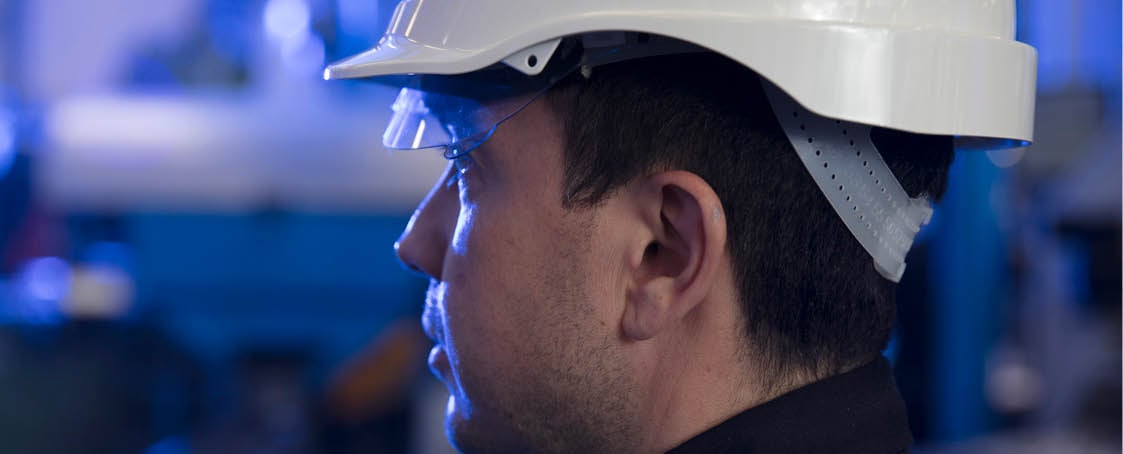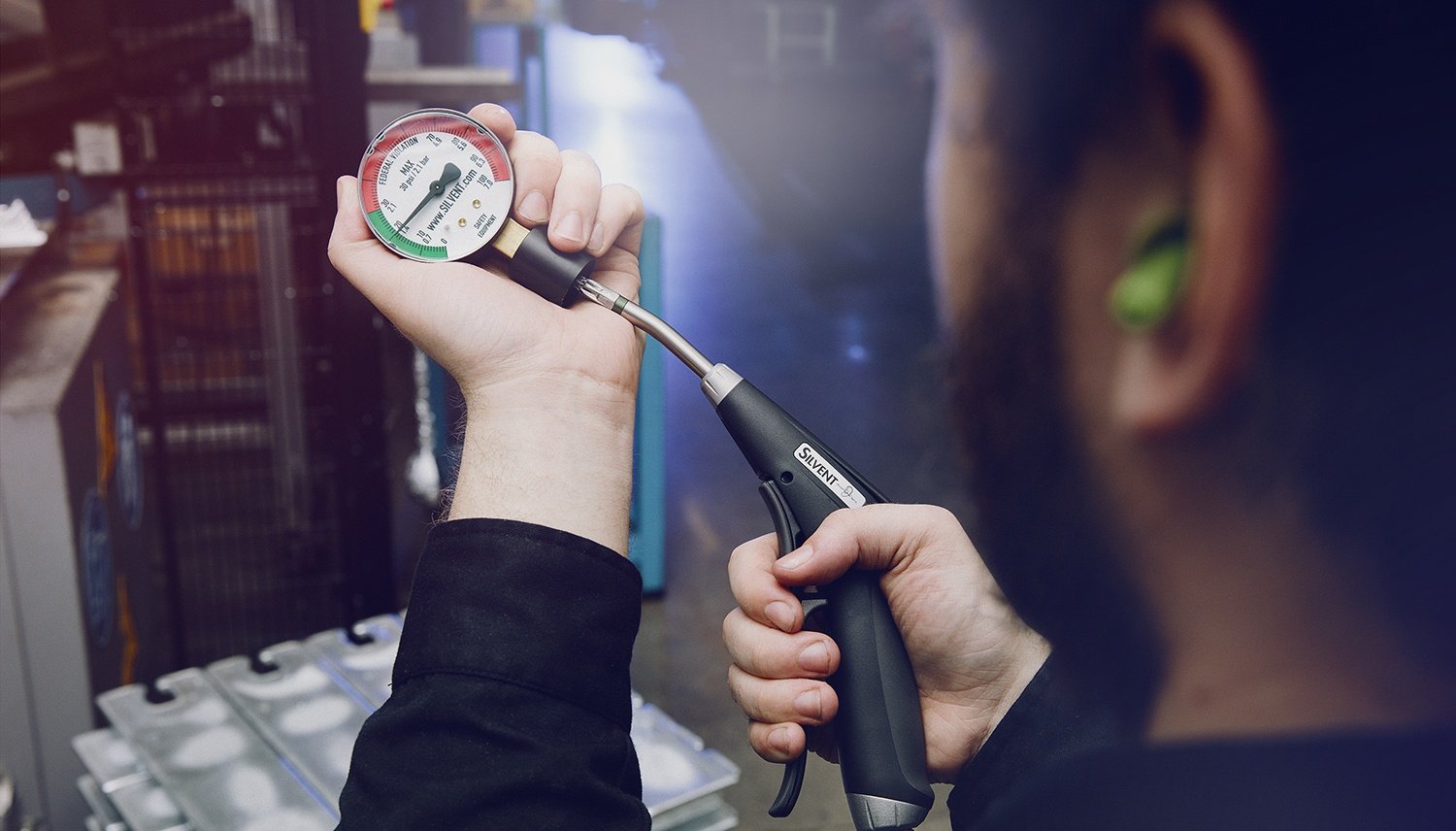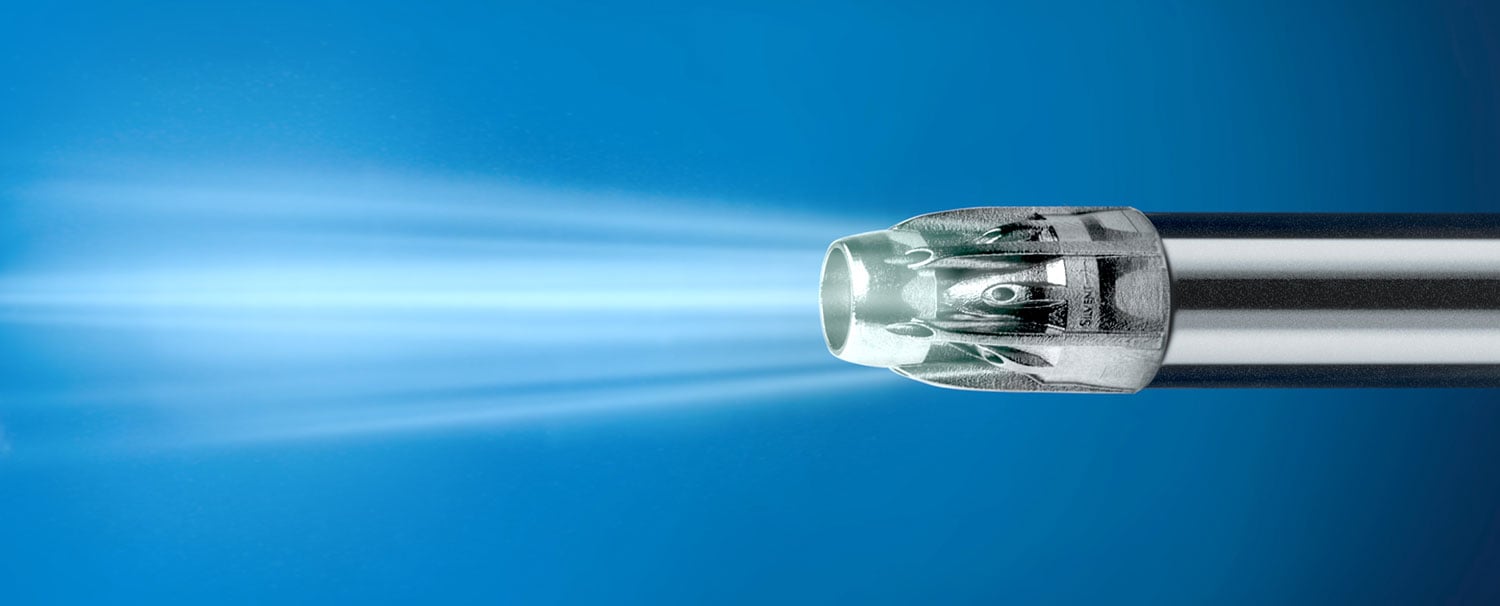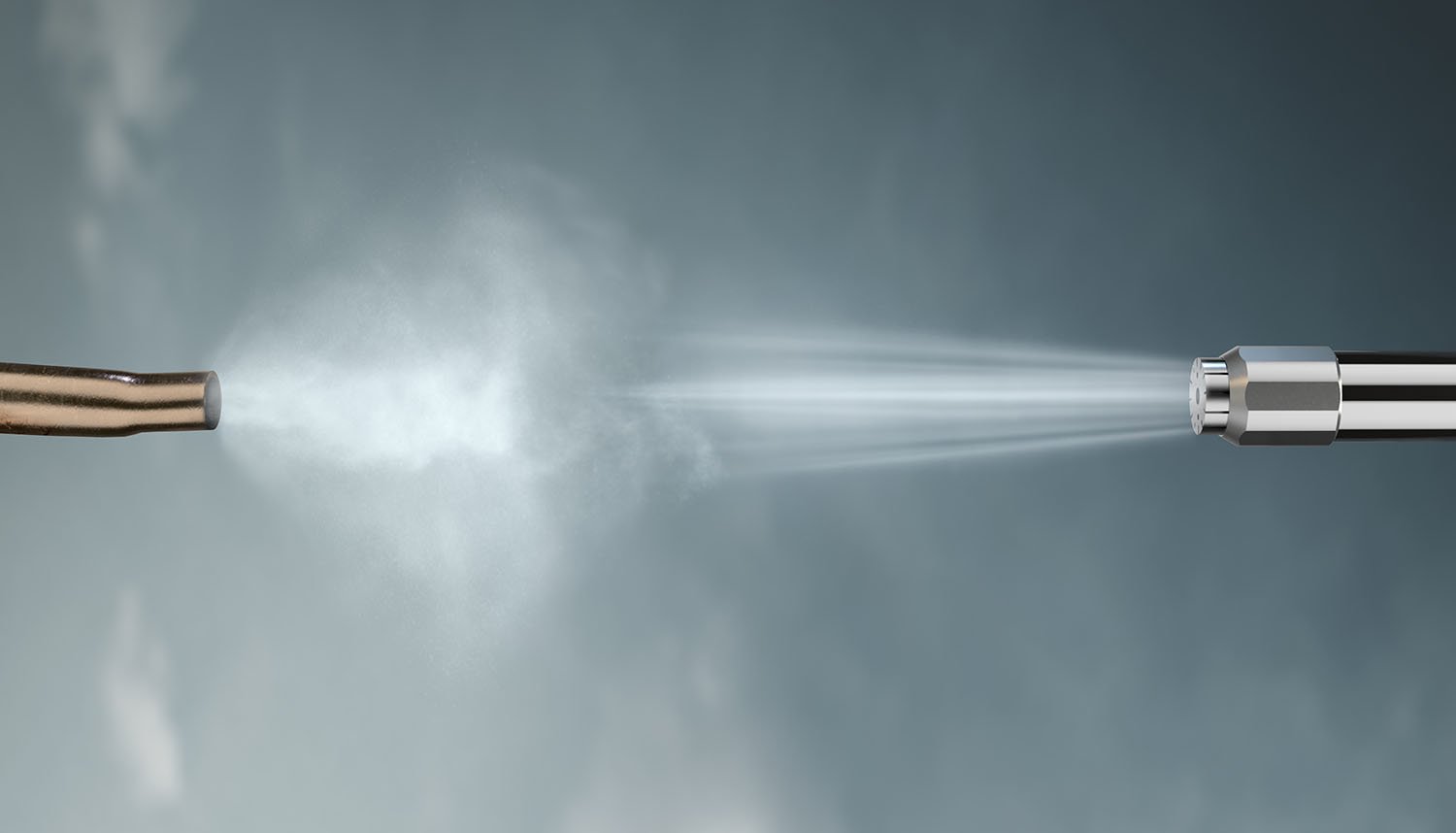Pneumatic silencers, also called mufflers, are often used in machines, to lower the sound that appears when compressed air is ventilated through the valve´s exhaust ports. This is important to make sure that the employees are not exposed to harmful noise. A lot of scientists and experts claim that noise is one of our biggest work environment problems. Therefore, it is important to eliminate the noise that is possible to affect. But, mufflers can also lead to costly downtime if they are not replaced when necessary. Some companies choose to take away the mufflers to minimize the risk of downtime, which has negative effect on both the work environment and the workers’ health.
Mufflers can more than halve the sound level
With the right technique it is possible to take away almost all machine noise caused by compressed air. A machine is seldom equipped with just one muffler; it is usually equipped with several. The silencer divides the compressed air through a lot of small holes, that increase the sound frequency to levels that cannot harm or be heard by the human ear. With the help of mufflers, it is common to be able to lower the sound level by 30-40 dB(A). This makes a big difference, since a decrease by 10 dB(A) is perceived as a halving of the sound level. This can thereby lead to:
- a lower risk of hearing damage, such as tinnitus and hearing loss
- an improved working environment
- increased performance
Old mufflers can cause downtime
Sooner or later the muffler has to be replaced. The flow through the muffler will continuously become lower due to dirt and particles that will clog the filer. A lower flow through the muffler can be a cause of:
- impurities in the compressed air
- dirt in the pipes or other parts of the system
- operating lubrication from the machine
This is common in industry and hard to avoid. If the filter gets clogged, the compressed air cannot be evacuated creating the risk of a bigger counter pressure. A clogged muffler can cause big problems. Therefore, it is important to identify the mufflers that are clogged and replace these with new ones. A clogged muffler can both lower the work capacity of the machine and cause downtime, but it is also a safety risk. If the pressure in the muffler gets too high, the muffler can explode.
Which muffler do you need to change?
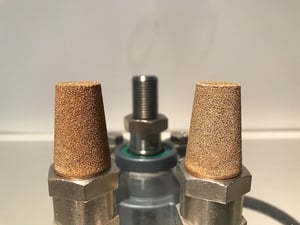
When a downtime is planned, it can be good to examine all mufflers and make sure to replace the ones that are clogged. This can seem to be an easy solution, but it can be hard to identify which mufflers need to be changed. One solution is to change all of the mufflers, both the ones that work and those that don’t, but this will cost the company more money than needed. To simplify the work there are mufflers with built in warning indicators, that makes it easier to see which mufflers are clogged and need to be changed. In this way the company does not have to change the mufflers that still work.

